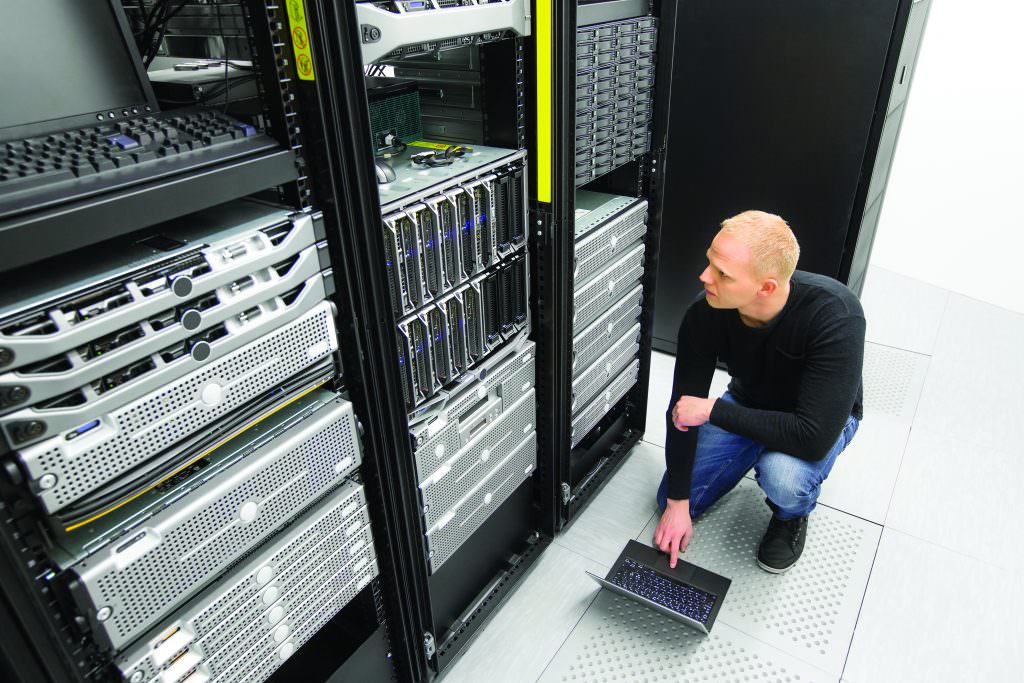Video Storage Wars

Hyper-convergence technology can simplify surveillance storage and enhance security

Brandon Reich, Pivot3
The physical security systems and devices of today are more connected via LANs and the Internet than ever before. This extension of the network creates great opportunities, such as the growth of the Internet of Things (IoT), but it also creates additional vulnerabilities.
Any IP-enabled device serves as an entry point to a network, and with that access point can come hackers trying to obtain valuable data.
Therefore, these devices, including physical security solutions, must incorporate the same protocols and protections as any other IT devices to help protect the data being collected as part of the overall security posture of an organization.
The industry is evolving in many ways: Devices are more connected; IT and physical security functions have merged even more than was previously imagined, and IT threats continue to emerge. Security is not limited to the security department. IT and cybersecurity professionals have a growing influence in overall security decisions, and this trend continues to accelerate at a rapid rate. Significant changes are occurring within the data center and within the security operations center, creating major disruptions to the large enterprise server infrastructures often relied on by IT departments. The emergence of virtualized solutions that enable advanced mobility is changing user expectations, fundamentally altering the way the industry thinks about IT.
IoT is also affecting the security and surveillance market. Network-enabled devices and the demand for more actionable data are driving increased security spending. A report from Gartner projects that 6.4 billion connected devices will be in use worldwide in 2016, up 30 percent from 2015, and the total will reach 20.8 billion by 2020. Gartner also estimates that IoT will support total services spending of $235 billion in 2016, up 22 percent from 2015.
Today’s IT and surveillance leaders are constantly on the lookout for new ways to gather, manage and store data to run their departments more efficiently, as well as maintain budgets and contribute to the overall success of the business. Video surveillance is a valuable tool to help maintain a secure environment and drive actionable business intelligence, and as a result, the number of video surveillance tools deployed continues to increase.
With the growing number of cameras – especially high-resolution models – more surveillance video is being collected and analyzed today than ever before. At the same time, customers of all sizes and in all markets are finding new ways to capture and leverage information from multiple sources – including video surveillance cameras, access control systems, video analytics and physical security information management (PSIM) platforms – to develop reports and identify trends that not only enhance security, but optimize internal operations as well.
 The flood of video and business data is driven by the widespread adoption of megapixel IP cameras. A recent IHS report found that new video surveillance cameras worldwide in 2015 produced 566 petabytes of data daily. In 2017, that number is expected to exceed 1,500 petabytes per day. Newer technologies, such as 4K surveillance solutions and video analytics, are also gaining traction in markets ranging from corrections to retail. Such innovations transform large amounts of video from noise into “intelligent” data. As more users lean on surveillance to play a role in big data analysis, the demand for video storage grows exponentially. This trend has another effect: The detailed image quality provided by high-resolution cameras generates enormous requirements for storage capacity and bandwidth. In fact, a single megapixel camera can generate a terabyte of data every day.
The flood of video and business data is driven by the widespread adoption of megapixel IP cameras. A recent IHS report found that new video surveillance cameras worldwide in 2015 produced 566 petabytes of data daily. In 2017, that number is expected to exceed 1,500 petabytes per day. Newer technologies, such as 4K surveillance solutions and video analytics, are also gaining traction in markets ranging from corrections to retail. Such innovations transform large amounts of video from noise into “intelligent” data. As more users lean on surveillance to play a role in big data analysis, the demand for video storage grows exponentially. This trend has another effect: The detailed image quality provided by high-resolution cameras generates enormous requirements for storage capacity and bandwidth. In fact, a single megapixel camera can generate a terabyte of data every day.
As the need for storage grows, so too does the demand for data to be easily accessible over the Internet or networks within an enterprise organization. Keeping that data safe and secure has become a priority for both physical and IT security professionals.

Storage and Security
Surveillance video is only useful if it is reliably captured and stored. Today’s advanced camera systems use more bandwidth and require greater storage, which is often the most costly piece of a video surveillance installation. So how can surveillance users manage the growing need for storage and the growing costs associated with it?
Before addressing the ways in which vulnerabilities are identified and rectified, we must first understand the opportunity we have for video storage in today’s marketplace. There are several different video storage technologies: direct attached storage (DAS), network attached storage (NAS), and storage area network (SAN).
Digital video recorders and network video recorders with DAS were designed to be simple digital replacements for VCRs. DAS is an acceptable option for small applications, generally fewer than 30 cameras. However, these single-box products with fixed storage capacity and performance cannot offer the scalability and reliability that IT and surveillance professionals demand.
NAS was designed to provide a much larger and more flexible storage resource for the read-intensive needs of large businesses and associated applications such as email and document storage. NAS offers better scalability than DAS, but it has limitations in video surveillance environments. Its file system layer creates additional traffic on the same network as video data recording, and the need for defragmentation adds significant overhead. This results in poor throughput performance that inhibits the systems’ ability to ingest the larger amount of data, leading to frame drops and video loss.
SAN offers seamless consolidation and sharing of storage space, which is more efficient than NAS devices. A SAN enables video data to go straight from the camera through the network to a generalized pool of storage. IT SANs are sold based on an average level of performance and are optimized for read-intensive workloads – not ideal for the surveillance environment because video systems require a minimum level of performance at all times and are very write-intensive. As with NAS, any slowdown in the system’s computing or write ability can cause frame drops and video loss.

SANs are engineered to be highly reliable and scalable. They are a good solution for general purpose IT environments with many small, random reads and writes. However, the SAN design leads users to over-provision appliances to manage the fluctuation of incoming video from hundreds, or at times thousands, of cameras. In addition, IT SANs are very complex to set up and manage, requiring the services of a trained IT administrator.
Innovations in the market have resulted in new options beyond traditional IT storage methods. Hyper-converged infrastructure (HCI) solutions offer a much simpler, more practical and cost-effective alternative. HCI greatly reduces datacenter costs and complexity by integrating SAN and server virtualization capabilities into a single software-defined infrastructure deployed on commercial off-the-shelf server hardware.
The advantage of HCI is that it provides the benefits of enterprise-class IT infrastructure – performance, resiliency, efficiency and scalability – without the high cost and complexity.
HCI appliances designed for the needs of the video surveillance market are simple to deploy and scale. Better performance and availability is achieved when compared to traditional enterprise-class storage, but without the cost, complexity and skill requirements imposed by legacy SAN/NAS with separate physical servers. Because the storage pool is virtualized, storage is completely scalable: Individual appliances can be added to meet growing surveillance needs. Adding a camera here or there when a hot spot or interest area is identified or increasing resolution is easily accomplished.
System uptime and data availability is critical in video surveillance, especially in mission-critical applications. While redundant array of independent disks (RAID) technology is typically used to protect data within a single server or group of disks, HCI appliances use more advanced erasure coding to protect data across all of the appliances in an array. This approach protects data against disk drive failures, as well as against the loss of an entire appliance, and ensures that the data stored on that appliance or those disks is immediately accessible even during a failure. Built-in failover means the video application never goes offline and never stops recording. This level of resiliency cannot be accomplished with DAS, even if software-based failover solutions are deployed.
As the value of video surveillance data continues to grow in applications from marketing to sales, from operations monitoring to facility utilization, it is more important for users to look beyond traditional storage methods to save on costs and expand system capabilities.
HCI is a technological development that is causing a fundamental shift in the IT sector, and video surveillance users in a wide variety of markets can realize benefits from this technology.
HCI is even ideal for mid-market applications because it can deliver enterprise-class IT capabilities that provide users with highly efficient shared storage, server consolidation and built-in failover, without the complexity or cost typically found with SAN storage. In fact, mid-market video deployments of as many as 200 cameras can realize the IT benefits of SAN at a price point competitive with DAS servers and NVRs. Built-in server failover protects system performance and data during hardware failures, a highly sought after feature typically only found in large, complex enterprise surveillance implementations.
Ensuring the Safety of Data in the Operations Center
Security personnel in the field require access to critical data, such as video surveillance footage and information from other pertinent integrated systems. Traditionally, the process of accessing video and security data remotely has been challenging, but innovations in infrastructure platforms are enabling the mobilization of security client workstations without limiting functionality.
 The ability to view security data on a mobile basis can reduce costs, improve situational awareness and enhance the effectiveness of responses in the event of a security situation. But, at the same time, the potential IT risks associated with accessing this critical information remotely are of utmost concern. Important surveillance data must be properly encrypted and protected from individuals or groups who might attempt to steal, tamper with or otherwise breach this information.
The ability to view security data on a mobile basis can reduce costs, improve situational awareness and enhance the effectiveness of responses in the event of a security situation. But, at the same time, the potential IT risks associated with accessing this critical information remotely are of utmost concern. Important surveillance data must be properly encrypted and protected from individuals or groups who might attempt to steal, tamper with or otherwise breach this information.
Security leaders can leverage the latest IT innovations to improve physical security operations and effectiveness, while ensuring that IP devices and critical security data remain secure, even as users demand mobility and remote access to data. The once siloed IT and security organizations must collaborate to ensure robust data protection strategies are successfully implemented.
IT trends, and the convergence of physical security and IT, have driven innovation in the security market, including the use of hyper-converged solutions for video surveillance server and storage needs. HCI ensures system reliability and high availability of video data, leading to more resilient security and business intelligence efforts.
Overall, advanced technologies like HCI deliver myriad benefits. These platforms work in conjunction with a business’s security posture to reduce risk, improve response times and effectiveness, and enhance protection. But all of this must be accomplished in a manner that protects sensitive security data and reduces the likelihood of exposing organizations to cyber and physical security risks. Ensuring security across the enterprise is always the most critical goal.
Brandon Reich (breich@pivot3.com) is director of surveillance solutions for Pivot3 (www.pivot3.com)
